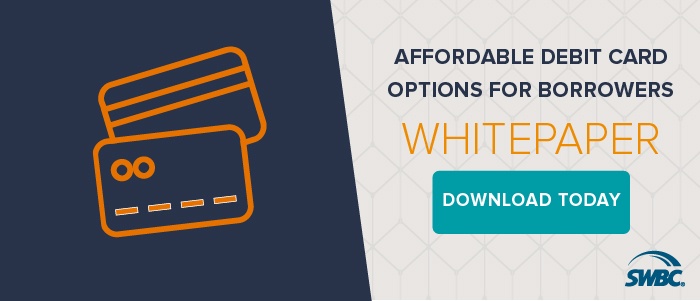Over the past 12–24 months, the financial services industry has witnessed a dramatic shift in customer behaviors and expectations. The pandemic may have accelerated digital adoption, but the lasting i...
The Benefits of Implementing Debit Card Payment Options
Companies in every industry have had to adapt to growing consumer expectations for financial interactions that are fast, easy, and secure. Experiences with online retail firms like Amazon have conditioned consumers to expect a seamless payment process where debit or credit cards can be used with the click of a button from any device—or even activated through voice commands. That retail experience has evolved into strong bill payment preferences that have influenced how consumers want to manage their loan payments.
Like any new trend or technology, organizations can find themselves in a position of trepidation, hesitant to adopt for fear of the unknown. However, taking an approach that is too cautious has risks of its own, causing financial institutions to lose ground on two critical fronts: customer satisfaction and operational efficiencies. Implementing debit card loan payments is the new frontier for many lenders, and for good reason. Debit is the payment option of choice for 171 million U.S. consumers, according to Simmons National Consumer Study (Fall 2017). Unfortunately, there’s a strong disconnect between what consumers want and what financial institutions offer, and consumers tend to vote with their feet by ditching institutions that don’t offer the convenience they crave.
How consumers benefit from debit cards
Both consumers and financial institutions benefit when lenders offer debit card payment options. Millennials, the largest generation at more than 75 million, have shown a definite preference for debit cards: only 50% have credit cards and 78% prefer using debit cards. Providing them with an easy, seamless bill-paying experience is an opportunity to build relationships with a cohort that has less entrenched loyalties to name brand financial institutions—and a long runway for financial service needs.
How lenders benefit from debit cards
Beyond the significant customer satisfaction gained from offering debit card payment options, there are efficiencies and real cost savings for lenders. In addition, setting up loan payments as a recurring debit transaction improves the efficiency of the payment process—giving borrowers a quick way to avoid delinquency in the first place.
Developing a superior payment strategy also represents an opportunity for lenders to distinguish themselves in a tight market. According to The Financial Brand, financial institutions are struggling to meet consumers’ basic demands online: Less than half of financial institutions surveyed had the capability to let borrowers open an account without visiting a branch, and less than 25% gave borrowers the ability to complete a mobile account opening on a smartphone.
Seamless integration between channels is no longer optional in banking, representing ‘table stakes’ for any digital consumer. Despite the importance, Computer Services Inc. found that only 48% of bankers put developing a positive omnichannel experience as a top priority in 2018.
The urgency of meeting consumer expectations, combined with the benefits lenders gain in the process, provide compelling reasons for financial institutions to adopt debit card payment options. It’s no longer an option to evaluate and weigh in if a positive customer experience on these payment channels is important or not. It now has measurable and identifiable direct impacts to your top-line financials.
Dive deeper into how you can make debit card payments work for your institution by downloading our whitepaper, Affordable Debit Card Options for Borrowers.


Let Us Know What You Thought about this Post.
Put your Comment Below.